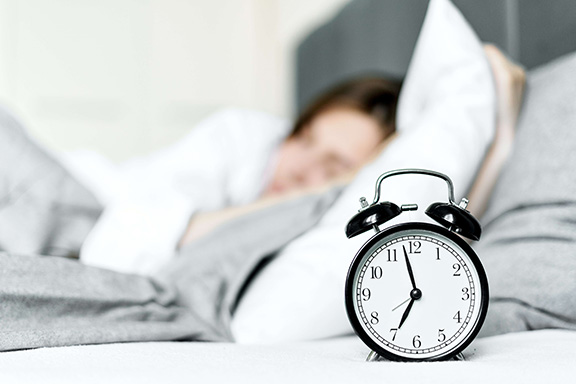In our previous blog article, we discussed a few simple ways to encourage better sleep for patients suffering from insomnia. In this article, we’re going to explore some less-common methods (perhaps some you’ve never heard of) that could help you (finally) get a good night’s rest.
These recommendations come from The American Academy of Family Physicians (AAFP) and from the desk of Dr. Leighan Talton. And as mentioned in the previous article, it’s important to understand that insomnia is a complex problem that can result from many different underlying conditions like movement disorders, breathing disorders, heart disease, psychological disorders and others. Underlying conditions should be identified and treated first – although their treatment may not resolve the insomnia.

TEMPORAL CONTROL THERAPY:
Temporal control therapy focuses on establishing a constant sleep-wake cycle. Set your alarm for the same time each morning regardless of how much sleep you’re getting during the night and engage in some habits that remind your body it’s morning – these could include opening the window shades, making your bed, taking a shower, going for a walk, etc.
Even if you feel sleepy during the day, avoid the urge to nap. To shake off the drowsiness, drink a glass of water, go for a walk, spend time outdoors, etc.
According to the Mayo Clinic, “short naps generally don’t affect nighttime sleep quality for most people. But if you experience poor sleep quality at night, napping might worsen these problems. Long or frequent naps might interfere with nighttime sleep.”
In short, if you’re suffering from insomnia, resisting naps can help ensure that you’re tired at bedtime and better your chances of getting into a consistent sleep-wake cycle.
SLEEP RESTRICTION THERAPY:
Sleep restriction therapy may be beneficial for patients who spend excessive amounts of time in bed trying to fall asleep. For example, consider a patient who goes to bed at 10 pm and wakes at 7:30 am, but only gets an average of 6 hours of sleep per night. That’s 3.5 hours of being awake in bed!
During the initial phase of sleep restriction therapy, the patient is advised to limit time in bed to only the number of hours he or she actually spends sleeping, but no less than 5 hours (e.g., 6 hours out of 9.5 hours total.)
As sleep efficiency improves, sleep time is gradually increased so that the patient is asleep most of the time he or she is in bed.
According to Stanford Health Care, “people experience marked improvement in the quality of sleep after a week of restricted time in bed, but they also realize that that they are not getting enough sleep. In this case, the next step is to gradually extend the time spent in bed by 15 to 30 minutes, as long as wakefulness in the middle of the night remains minimal. Each new extension of the time in bed is followed for at least a week before progressing to the next extension.”
With both therapies, it’s advised that you seek the guidance of your physician and keep a sleep diary to track your progress.
Has temporal control therapy or sleep restriction therapy worked for you? We’d love to hear your story in the comments below.
American Academy of Family Physicians (www.aafp.org/afp)
https://www.sleepfoundation.org/physical-activity/best-exercises-sleep
https://www.mayoclinic.org/healthy-lifestyle/adult-health/in-depth/napping/art-20048319

